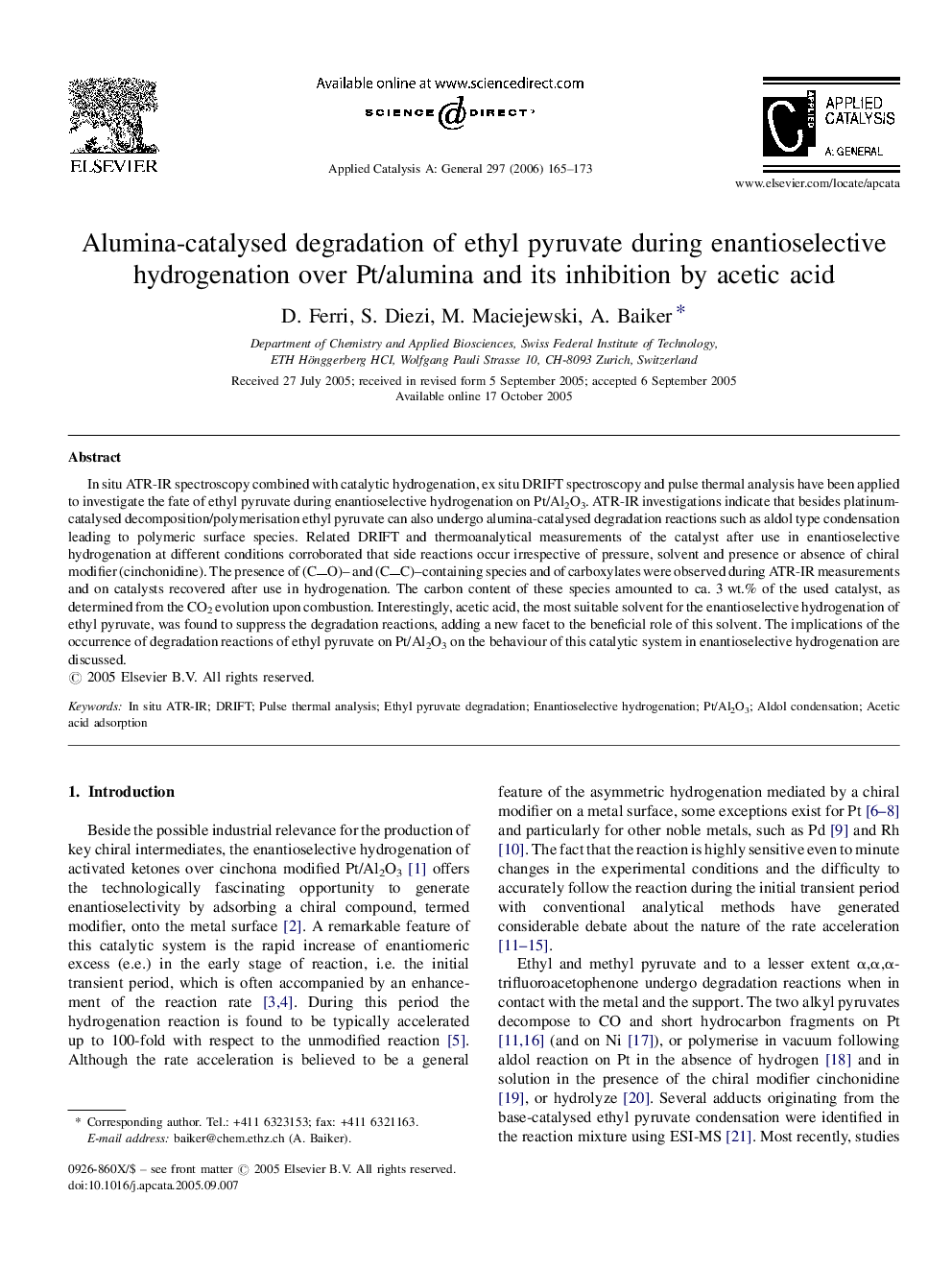| Article ID | Journal | Published Year | Pages | File Type |
|---|---|---|---|---|
| 44282 | Applied Catalysis A: General | 2006 | 9 Pages |
In situ ATR-IR spectroscopy combined with catalytic hydrogenation, ex situ DRIFT spectroscopy and pulse thermal analysis have been applied to investigate the fate of ethyl pyruvate during enantioselective hydrogenation on Pt/Al2O3. ATR-IR investigations indicate that besides platinum-catalysed decomposition/polymerisation ethyl pyruvate can also undergo alumina-catalysed degradation reactions such as aldol type condensation leading to polymeric surface species. Related DRIFT and thermoanalytical measurements of the catalyst after use in enantioselective hydrogenation at different conditions corroborated that side reactions occur irrespective of pressure, solvent and presence or absence of chiral modifier (cinchonidine). The presence of (CO) and (CC)containing species and of carboxylates were observed during ATR-IR measurements and on catalysts recovered after use in hydrogenation. The carbon content of these species amounted to ca. 3 wt.% of the used catalyst, as determined from the CO2 evolution upon combustion. Interestingly, acetic acid, the most suitable solvent for the enantioselective hydrogenation of ethyl pyruvate, was found to suppress the degradation reactions, adding a new facet to the beneficial role of this solvent. The implications of the occurrence of degradation reactions of ethyl pyruvate on Pt/Al2O3 on the behaviour of this catalytic system in enantioselective hydrogenation are discussed.
